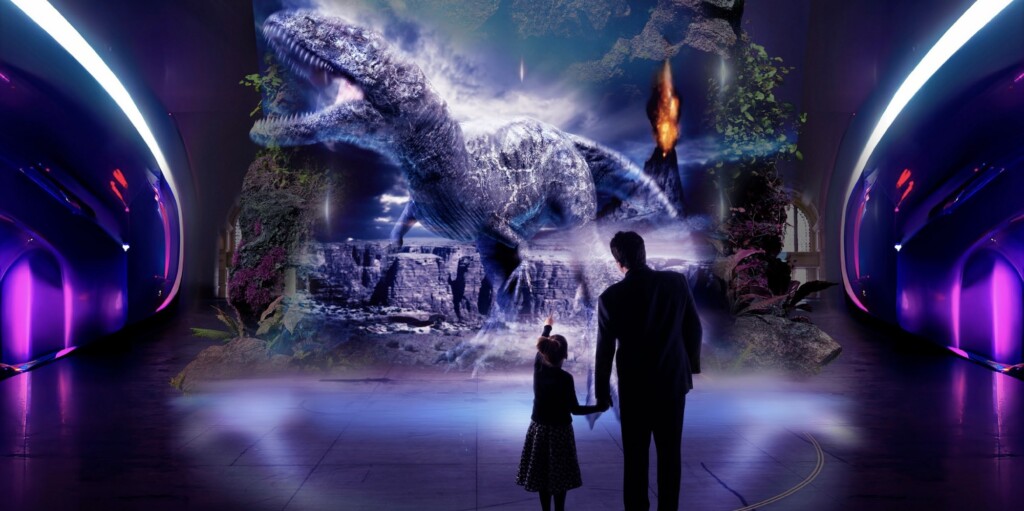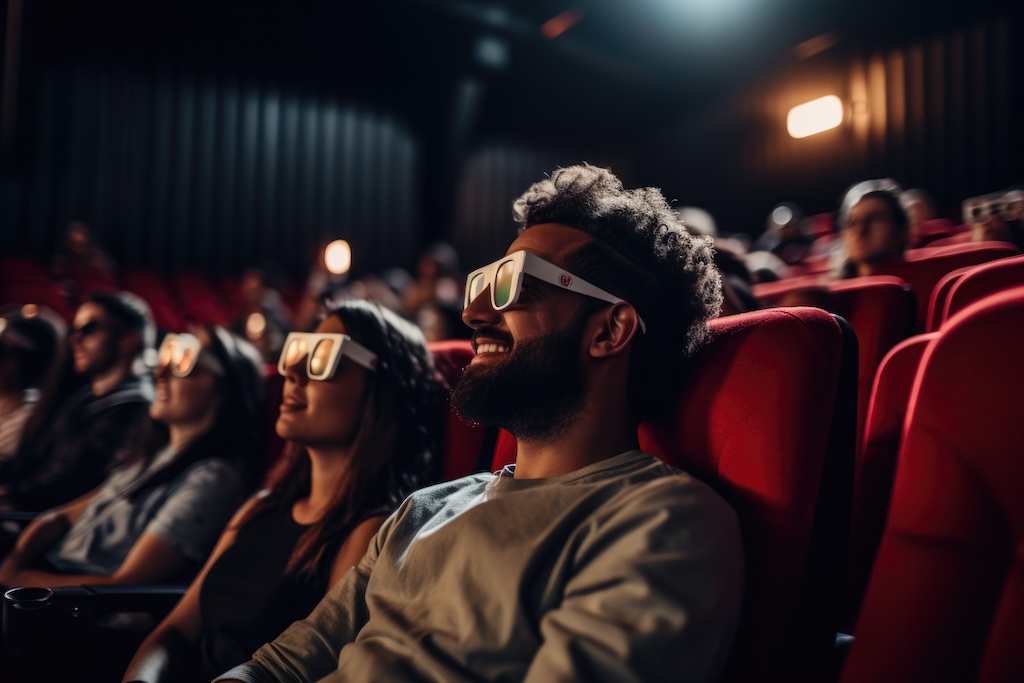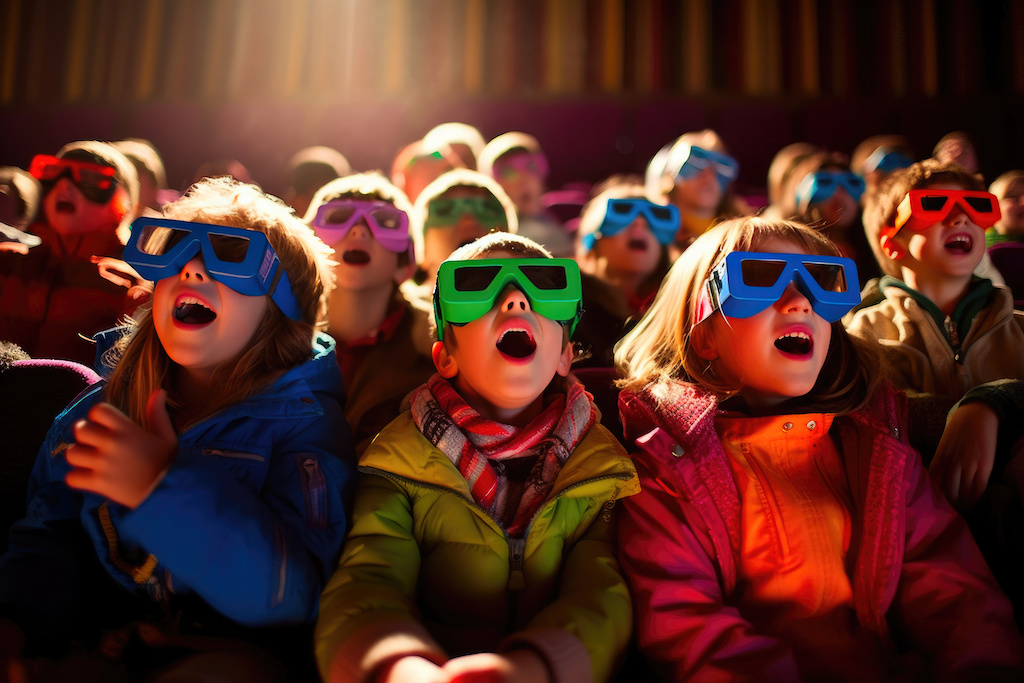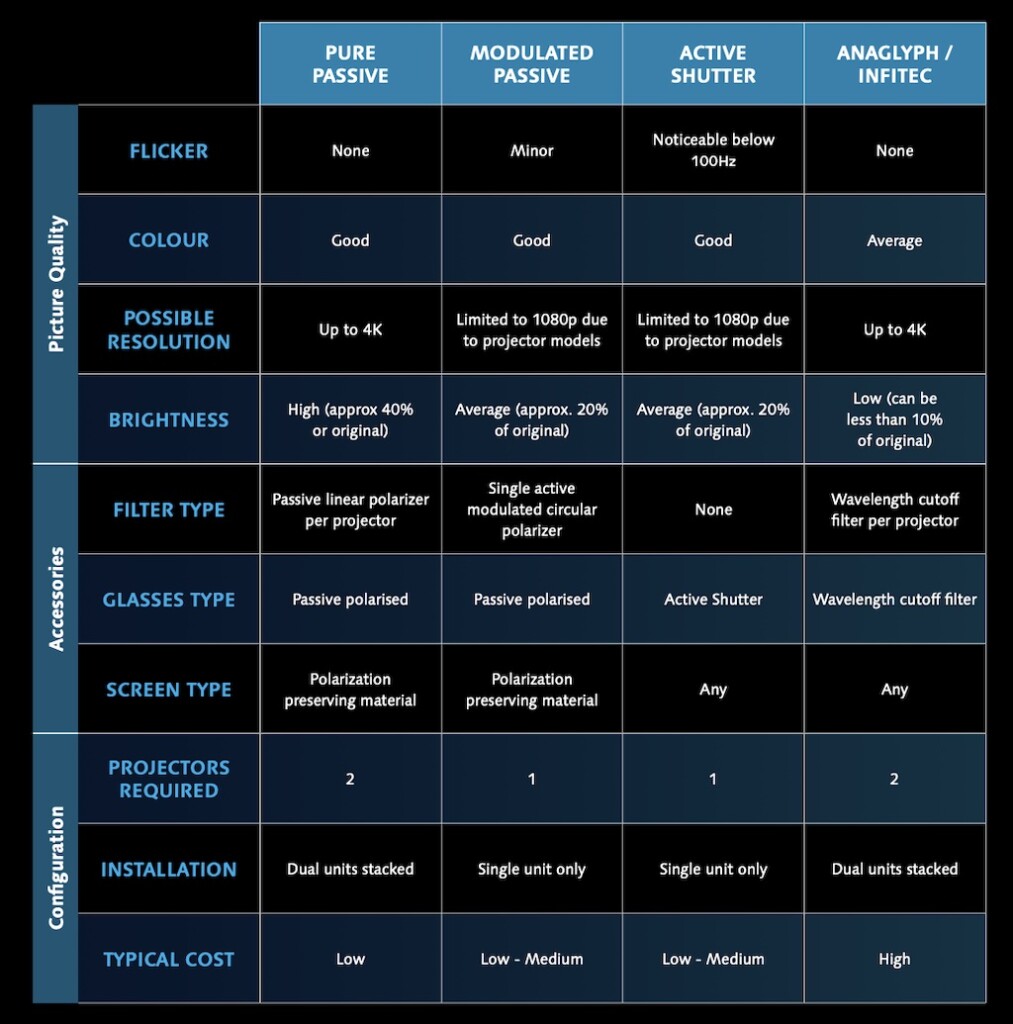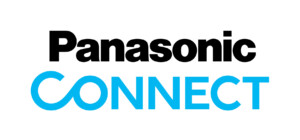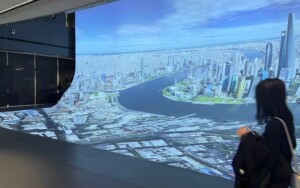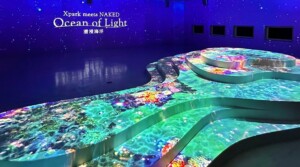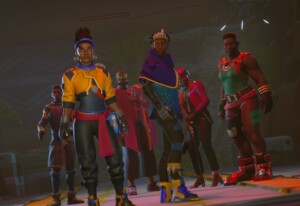Many of us will remember the first time we saw a 3D film and enjoyed the thrill of characters seeming to jump out of the screen towards us. The first few times were fun, but the impact rapidly wore stale, and the 3D boom at the cinema went quiet. However, 3D technology has far from disappeared. In fact, the application of 3D technology has now advanced further from those early days thanks to more powerful media servers and higher resolutions.
The use of cutting-edge 3D methods in blockbuster films like Avatar 2 appears to be reviving 3D at the cinemas, although theme parks and location-based entertainment (LBE) venues are where contemporary 3D is mostly used today.
According to Allied Market Research, the market for 3D technology will expand from €171 billion in 2020 to €703 billion in 2030, with a compound annual growth rate of 16.3%. In addition to growth in sectors like healthcare and defence, it is the entertainment industry that is likely to lead this development.
So, with this trend showing no signs of slowing, how can attraction operators ensure that they stay ahead of the curve? And how do they make sure they choose the right 3D projection technology to support their vision?
To find out more, we speak to Lluis Mila, product marketing manager at Panasonic Connect, a leading audiovisual technology provider. He explains some of the latest trends to watch, and how selecting the right equipment can make or break an immersive experience.
3D projection powers attraction trends
3D projection technology is helping to power some of the biggest current trends in the attractions industry, says Mila, from mixed-reality, interactive experiences and multi-sensory applications to personalisation and storytelling.
“Immersive applications for 3D technology are very important, things like mixed reality and interactive experiences. These trends are alive and will be there for the coming months and years. There is a call for 4D experiences, multi-sensory experiences, which is 3D projection plus things like scent, touch and temperature changes, for example. Those have a bigger impact on the visitor.”
There is also the trend for artificial intelligence (AI) and data analytics. He adds:
“Data analytics and AI are important because you can personalise the experience and generate 3D content in real-time, depending on the interaction of the individual.”
In addition, storytelling is key to an engaging attraction, and 3D technology helps attractions to tell stories better. For instance, in museums, guests often want to know the stories behind the objects or works of art:
“It’s important to explain the features and explain the story behind the picture. Sometimes, the story is much more important than the picture itself, and people are interested in finding out more. 3D projection is a powerful tool to boost storytelling. We also see 3D projection used for educational purposes, as children learn by playing.”
Meeting the demand for more immersive experiences
In terms of this demand for more immersive experiences, Mila puts this down to a change in the way that guests interact with attractions, and a shift in what they want or expect from their entertainment.
“It’s a change in mentality. We are moving from products to experiences and people are looking for experiences in theme parks. We all want to escape from reality and to experience new things.”
Immersive technology is important, he adds, because it makes that experience more real:
“Things like driving a Formula One car, for example, are dangerous and expensive, and not accessible for most people. But with new technology, theme parks can offer that experience, at an affordable price, and it’s believable.”
And it’s not just theme parks getting in on the act either. We’re seeing a rise in this type of technology in the museum world, with the increase of digital art and more immersive exhibitions. 3D technology is also being used to enhance the experience in sectors like live music, e-sports, gaming, and more.
One of the reasons that 3D projection technology has remained popular in the attractions space, compared with the drop-off in 3D movies at the cinema, has to do with the length of the experience.
“We had this explosion of 3D films, but after one or two years, everybody came back to the 2D version. That is because normally after 20 or 25 minutes, you experience eye fatigue and some discomfort. In theme parks and museums, these shows are still very popular because the shows last 20 or 25 minutes maximum. So, there’s no time to get this eye fatigue.”
How does 3D projection work?
Having explored the demand for 3D projection, it’s also important to understand exactly what we mean by the term. Mila explains:
“Stereoscopic projection creates the illusion of 3D images/videos on a 2D surface. Since we perceive reality through two eyes, it is necessary to create two slightly different perspectives to simulate the views of each eye. These generated views are projected onto a surface in rapid succession.”
“Viewers must wear special glasses designed to separate the two sequences. There are two types of glasses: Polarised and active shutter glasses. The glasses feed the brain with two sequences. Then the brain fuses both perspectives into a single 3D image, creating the perception of depth.”
Different 3D technologies
It is possible to simulate this false 3D content on a 2D surface by using two different technologies: active 3D technology and passive 3D technology.
Active 3D projection is based on the use of active shutter alternate frame sequencing and battery-powered (active) glasses with transparent LCD panels in front of each eye. These active shutter glasses use separate liquid crystal displays in front of each eye. The LCD turns opaque in one eye at a time, so that each frame is seen by only one eye.
“Driving active shutter glasses means the displaying device and the source must be able to run at two times the original framerate to provide enough information to each eye to create the 3D effect,” says Mila. “Only a single projector is required to create a 3D effect and any projection surface can be used. It’s also a very scalable solution as multiple projectors can be synchronized together.”
Active systems are mainly used in specialist areas such as medical training, where they provide a high-quality image. However, they are not suited to mainstream environments and cannot deliver 4K resolution. Only specific projector models can decode and synchronise active shutter 3D systems. The glasses are expensive and always require a wireless data link.
Passive vs. active
When it comes to passive 3D technology, there are further distinctions: pure passive 3D and anaglyph passive 3D.
Pure passive 3D uses polarization to restrict the light that reaches each eye to create the 3D effect. Two projectors, with appropriate filters, project two matching images superimposed on top of each other onto a special polarisation-preserving screen surface.
“This reflective surface looks silver, hence the old movie theatre term “the silver screen.” The standard passive glasses then capture each colour in a separate eye – creating the 3D effect. The use of two projectors can make this system more expensive. But two projected images also doubles the brightness of the image, providing higher quality.”
With anaglyph passive 3D, the system uses different wavelengths of light to encode the left and right eye images.
“The most common anaglyph systems use either cyan/red or green/magenta (chromatically opposite). Both images are superimposed and shown simultaneously. Any display device or single projector can display anaglyph content.”
Popular attractions that use 3D projection technology
To see these different 3D technologies in action, we can look at some projects that Panasonic has supplied projection technology for.
An example of active 3D projection can be found at Germany’s Movie Park, in the Lost Temple immersive tunnel experience, created by Simworx. The Lost Temple transports visitors to a previously unexplored world, home to prehistoric animals, dinosaurs and temples.
The immersive tunnel is the finale of the experience, following an exciting journey into an underground excavation site. For this, visitors board a Jeep-themed simulator unit mounted on a 3DOF motion base. They then travel along a short track into the main show area. This features a 5-metre high, 46-metre long, 360-degree screen, putting them in the middle of the action.
The fully immersive 4D experience is achieved with 3D film projection to both sides and front, as the vehicle itself moves around and guests experience special effects like wind and scent, alongside surround sound and dramatic lighting.
The firm’s active 3D projectors include models from the PT-RQ35K series and the P-RQ25K series. This includes the PT-RZ34K, the PT-RZ24K, the PT-RZ17K, and the PT-RZ12K.
Meanwhile, Panasonic’s passive 3D projection technology is in use at Shrek’s Adventure, a popular London attraction that aims to bring to life the world of the hit movie franchise. Here, visitors can meet and interact with Shrek, Donkey, and friends. The guest experience begins with the Flying Magic Bus. This is a 4D ride that transports them to the land of Far, Far Away, driven by Donkey himself.
Some Panasonic passive 3D compatible projectors include the PT-RQ35K series, the PT-RZ120, the PT-RCQ10 series, the PT-RZ990 series, the PT-MZ20K series, and the PT-MZ880 series.
Panasonic’s range of 3D projection technology can be found in attractions around the globe, including at the world’s best theme parks.
Choosing the right tech is vital
Ultimately, the type of 3D projection technology that an operator needs will depend on the kind of experience they are developing. It will also depend on what they want to achieve. There are advantages and drawbacks to both passive and active 3D technologies.
Lluis MilaIt’s important that we listen to what the main goal or objective of the show or the experience is, to help customers choose the right technology
“When clients ask us for a project, we must be transparent and explain the advantages and disadvantages of each technology,” says Mila. “One important point in any tender is the price. For active 3D, you only need one projector, so you save money there. But then if you have 100 visitors at a time, you will need 100 glasses. And the active glasses are quite expensive.
“It’s important that we listen to what the main goal or objective of the show or the experience is, to help customers choose the right technology. For instance, if you really need 4k, you will have to go for the passive solution. Or, if your experience involves a lot of movement and motion and the resolution is not so important, you might choose active 3D projection instead.”
Balancing the benefits and drawbacks
Another point is the brightness, he adds:
“In a very well-controlled environment, you can dim the lights on demand, you can regulate and control, you can monitor the audio, and you can manipulate the colours to prepare for active 3D, but the brightness is reduced. The 3D applications reduce the brightness by 40%, 50%, or even 60%. So, you are paying for a projector of 20,000 lumens and you’re getting only around 40% of the brightness.”
With active 3D, a third device is also needed to synchronise the projector and the glasses.
“You can use an infrared device to synchronise the glasses and the projector, or you can use radio frequency devices. If you have a very big audience, like a theatre or a cinema, radio frequency is better than the infrared solutions. That’s because the coverage of the device is better.
“Essentially, we explain everything, all the little details. First, we listen to the customer and then explain what we have and how it works, in order to recommend to them the best solution.”
Keeping the tech hidden
Another key consideration is how to ensure the technology remains hidden, powering the experience without drawing the guests’ focus and distracting them.
“In a theme park or a museum or any kind of immersive experience, you must make sure that the projectors are completely hidden from the audience, and that they are not casting any shades or shadows. One way of doing this is to use L-shaped lenses. This helps you to adapt to the area and make the projectors completely invisible.”
Noise is also a key point:
“In a theme park or any other storytelling setting, the audio is very important. You need to reduce the noise for the quiet scenes, for example. Also, in museums, where it tends to be a quiet atmosphere, the noise is very important too. We are reducing the noise with every new projector launch.”
The other factor is blending and image treatment. Immersive 3D and 4D experiences call for very large screens. So, with a bigger surface area to cover, more projectors are needed.
“When you try to blend different projectors using blending technology, it must be completely imperceptible. Everything needs to be completely well-adjusted and displayed in a position not to be seen by the visitor. So, this is very important, and we have been working on it for a long time. With one-chip or three-chip DLP technology, which is our native technology, we’re improving the result of this blending.”
Reliable 3D projection technology is key
In the attractions industry, whether the 3D projection technology is supporting a theme park experience or a show at a museum, it must be reliable. The technology needs to keep the experience running, for an uninterrupted guest experience and to minimise downtime.
“When it comes reliability, we have backup signals, for example, so we can make redundant systems. Projectors have different terminals. We have the option to test every single one beforehand and if it fails, the secondary terminal will be activated.
“We also have software that can monitor the projectors remotely. At our customer service locations, we can remotely monitor all the projectors. That is a service that we can provide to the end user, we can oversee and control everything. This means that we can warn the user and can react beforehand if one unit fails.”
For more than a century, 3D entertainment has caught viewers’ attention, and there are few signs that this trend is losing its appeal. In reality, development in the industry is destined to continue for the foreseeable future thanks to investments being made in the newest 3D technology by Hollywood blockbuster film producers, as well as by large theme park owners, like Disney, and projection manufacturers like Panasonic.
To find out more about Panasonic’s 3D projection technology and the different applications of passive and active 3D, download the company’s new free whitepaper, entitled Putting 3D into Perspective: A 3D Technology Guide for Location Based Entertainment, here.
